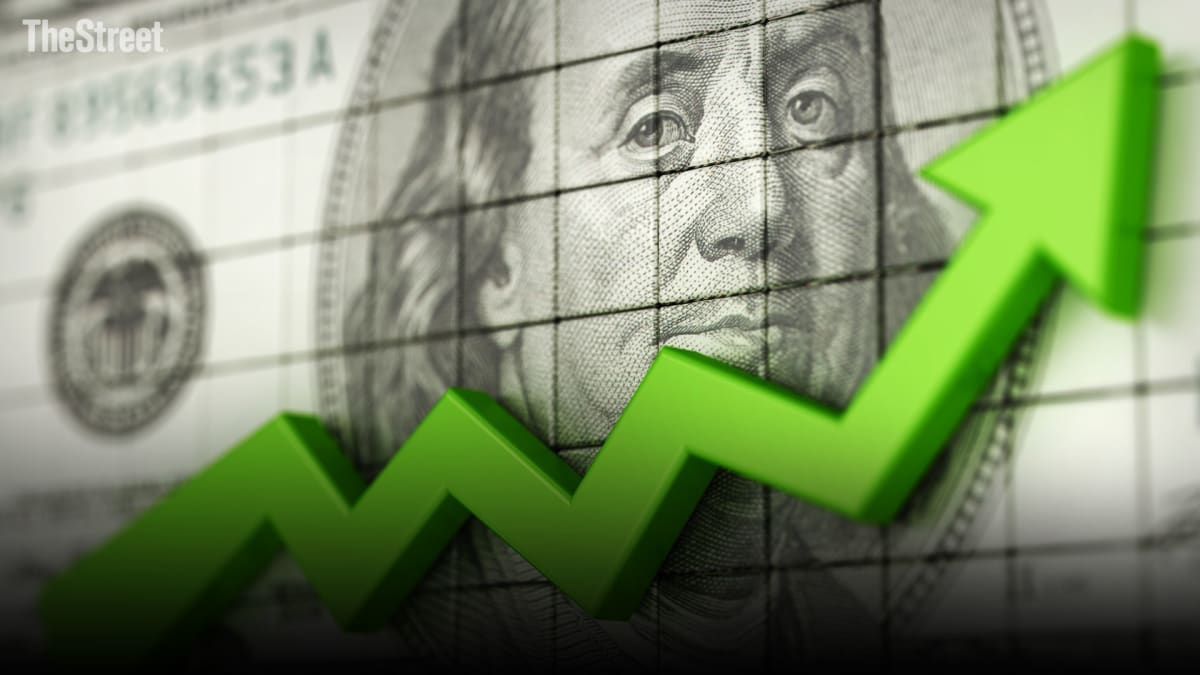
The Federal Reserve is likely near the end of its rate-hiking cycle, with traders expecting one final increase to the benchmark Fed Funds rate next month in Washington in a move that likely won't be affected by Wednesday's much-anticipated March inflation report.
Economists expect a modest cooling in inflation pressures for the month, with the headline CPI rate easing to 0.2% -- about half the pace of gains recorded in February -- and 5.2% on the year, extending its run of declines to a sixth consecutive month.
So-called core inflation, which strips out volatile food and energy components, is expected to be a bit more 'sticky', easing by only a small amount from both the previous month and last year's levels to 0.4% and 5.5% respectively.
The changes aren't likely to have a great deal of impact on the Fed's May rate decision, however, particularly in light of last week's employment report, which showed a solid gain of 236,000 net new jobs, a pullback in the headline unemployment rate to 3.5% and month-on-month wage gains of 0.3%, matching the 0.3% gains recorded over January and February and matching the Wall Street consensus forecast.
The CME Group's FedWatch is pricing in a near 70% chance of a May rate hike, which would take the Fed Fund rate to a range of between 5% and 5.25% when the Fed wraps-up its two-day policy meeting on May 3, with the odds of a June pause pegged at 61.5%.
Bets on a Fed rate cut in July, at least from this point, are essentially a coin toss.
Markets expectations were thrown for a loop yesterday, however, after data from the New York Fed's closely-tracked Survey of Consumer Expectations showed year-ahead inflation forecasts jumped by 50 basis point to 4.7% last month, even as participants noted the tightest overall credit conditions since 2014 in the wake of the Silicon Valley Bank collapse and the closure of Signature Bank shortly afterwards.
Federal Reserve Bank of New York President John Williams, however, told an event at New York University last night that he didn't see a significant connection between the March bank crisis and the central bank's efforts to slow inflation, adding that he doesn't "worry too much" about market projections of a late-year rate cut.
Still, JPMorgan JPM CEO Jamie Dimon cautioned last week that tighter credit conditions linked to the failure of Silicon Valley Bank and the rescue of Credit Suisse have increased the odds of recession and said the impact will be felt "for years to come."
"While the current crisis has exposed some weaknesses in the system, it should not be considered, as I pointed out, anything like what we experienced in 2008," Dimon said in his annual letter to shareholders. "Nonetheless, we do have other unique and complicated issues in front of us."
One of those issues, which could add to the Fed's inflation challenge, is the influence that OPEC's recent production cuts are likely to have on oil and gas prices over the coming months.
OPEC members, as well as Russia, agreed last week to take a further 1.66 million barrels of oil from the cartel's total daily output. The agreement means OPEC+, which includes Russia, is taking nearly 3.4 million barrels of crude from the market each day. That's equivalent to around 3.7% of daily global demand.
U.S. oil prices have rallied by around 20% since the OPEC decision, with domestic gasoline prices rising by around 8.8 cents to a national average of $3.57 per gallon, according to the consumer advocacy website Gasbuddy.
Patrick De Haan, Gasbuddy's head of petroleum analysis, says he expects the upward trend to continue "through much of the rest of the spring", but added that "once the transition to summer gasoline and refinery maintenance are behind us, April and May jumps could bring June slumps."
Broader economic weakness is also a factor that could both add further downward pressure on inflation forecasts and compel the Fed to re-think it's longer-term rate strategy.
The International Monetary Fund, in fact, lowered its 2023 and 2024 growth forecasts by 0.1% Tuesday at its annual Spring Meetings in Washington, with chief economist Pierre-Olivier Gourinchas citing "the financial turmoil of the last month and a half" that could "result in a sharper and a more elevated downturn if financial conditions were to worsen significantly.”
In the U.S., activity in the most important sector of the economy slowed notably last month, according to data from the Institute of Supply Management's benchmark survey, with two important sub-components -- measuring employment and prices paid -- indicating cooling inflation pressures heading into the spring and summer months.
The ISM's March survey of manufacturing activity, meanwhile, was pegged at 46.3 -- well below the 50 mark that separates growth from contraction -- with Bank of America's weekly "Flow Show" report noting that readings below 45 have preceded every U.S. recession for the past seven decades.
Meanwhile, around 228,000 Americans filed for jobless benefits over the week ending April 1, a tally that was well ahead of the Street's forecast of 200,000 new claims. The prior week's tally, meanwhile, was revised to 246,000 from an original estimate of 198,000, suggesting weakness has been evident in the job since the collapse of Silicon Valley Bank.
The Labor Department data followed figures from Challenger & Gray's closely-tracked report of monthly layoffs, which showed job cuts rising 15% over the month of March, to 89,703, more than triple the figures recorded over the same period last year.
Bank of America noted that around $87.8 billion of investment funds have moved into cash last week, with some $900 million exiting the stock market.
A key report from the Nation Federation of Independent Business, published Tuesday, also indicated a slowdown in hiring plans, the weakest expansion plans since 2009 and a pullback in selling prices.
Reports like this one on small business are becoming somewhat ominous," said Jeffrey Roach, chief economist for LPL Financial in Charlotte, North Carolina. "Businesses appeared to hunker down under the weight of tighter credit conditions and weaker economic growth."
"Although the economy is slowing, the Fed continues its fight with inflation and will likely hike rates at the next meeting," he added. "However, if the economy becomes more unstable, the Fed could pivot to rate cuts by the end of the year."







